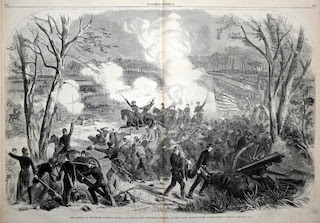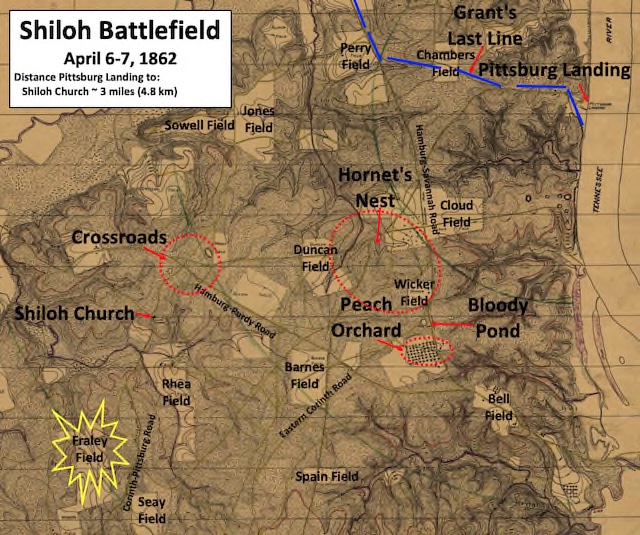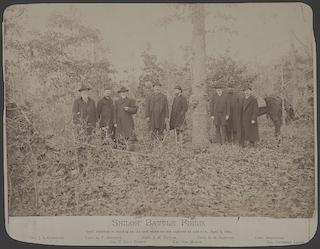
Harper’s Weekly published an artist’s rendering of the 16th Iowa in action at the Battle of Shiloh. The caption reads, “The Battle of Pittsburg Landing, April 7, 1862. Final and victorious charge of the Union troops under Major General Grant.”
March/April 2024 (Volume 16, Issue 2)
By Don Doxsie
Upper Iowa University (UIU) in Fayette was only three years old and had not even celebrated its first graduating class when the United States was plunged into the American Civil War in April 1861.
When President Abraham Lincoln put out a call for volunteers to fight for the Union army in September, UIU Junior David B. Henderson was stirred to action. As the university’s student body gathered for its regular evening prayers one night, he asked permission to address the group.
Henderson gave an impassioned speech to his classmates on the importance of keeping the Union together, then concluded by saying, “We, therefore, drop our books to fight our country’s battles.’’

A topical map of the Battle of Shiloh. Note the locations of the Shiloh church, Hornet’s Nest and Pittsburg Landing. Photo courtesy of Wikimedia Commons
Henderson, who was born in Scotland but grew up in Dubuque, was one of 21 Upper Iowa students who came to be known as the “University Recruits.’’ Also included in the group was a sophomore from rural Allamakee County named David Wilson Reed. They joined Company C of the 12th Iowa Infantry and embarked on an eye-opening trek into history. The Upper Iowa students were involved in 17 battles during the next four years, always carrying a special flag that was hand-stitched by female members of the university.
However, the most noteworthy episode of their lives came only about seven months after their enlistment in some otherwise tranquil woods on the west bank of the Tennessee River in southwestern Tennessee.
They were among 6,664 Iowa troops to fight in what came to be known as the Battle of Shiloh, a major battle fought on April 6-7, 1862, in an area located between a small church named Shiloh and Pittsburg Landing on the Tennessee River. It is by far the largest concentration of Iowa soldiers to fight in any battle in any war, and more than a third of them — 2,409 men, to be exact — were killed, wounded, or missing when the two-day engagement concluded.

Photograph shows portrait of Union veterans standing on the spot where Gen. B.M. Prentiss was captured on April 6, 1862, during the Battle of Shiloh. Those identified are Col. J.S. Cavender, Capt. A.T. Andreas, Col. T. Lyle Dickey, Gen. J.M. Tuttle, Maj. Geo. Mason, Gen. B.M. Prentiss, Capt. Doolittle, and Col. Cuthbert Laing. Retrieved from the Library of Congress, https://www.loc.gov/item/2018651892/
Shiloh was a battle that completely altered the way in which the nation viewed the Civil War. The war had begun not quite a year earlier and although there had been a few significant battles, there were lingering doubts about how big a crisis it was going to be. The two sides had clashed near Manassas, Va., the previous July in the Battle of Bull Run and there had been another substantial encounter at Fort Donelson in Tennessee in February 1862. However, the tally of killed and wounded in each of those battles amounted to fewer than 5,000.
Shiloh brought about a whole new level of carnage that would be repeated throughout the war. Over the course of two days, 23,746 men from Union and Confederate armies were killed, wounded or missing, accounting for more casualties than had been incurred in all previous American wars combined.
And soldiers from Iowa were a very big part of it.
TO READ THE ENTIRE STORY AND OTHER FASCINATING STORIES ABOUT IOWA HISTORY, subscribe to Iowa History Journal.
